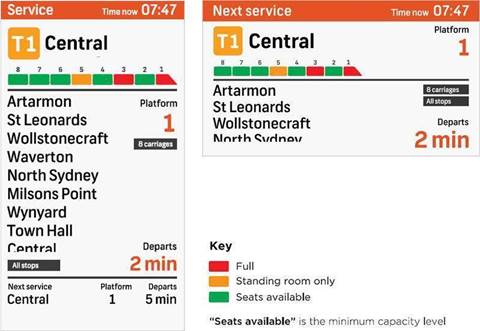The coronavirus crisis has completely changed the way we perceive life in the community. More and more people are moving away from public transportation because of the passenger influx, the fear of being contaminated is great. Nevertheless, with real-time information on the number of passengers on public transport, the use of public transport may become widespread again. Focus on current experimentation and solutions.
Making public transportation more enjoyable
As we have seen with recent Google updates, the comfort of passengers using public transit is a key concern. Options such as the ability to view real-time information on ridership in public transportation are flourishing on various mobility applications.
In June 2020, Transit conducted a study in North America on passenger flow in public transit and how it could affect the passenger experience. Unsurprisingly, 61% of people with access to a car avoid using public transit. In addition, before the pandemic, more than 60 per cent of users claimed to board public transit, even when crowded. This number is now only of 10%. A very significant drop that is important to note. Nevertheless, with real-time passenger information, nearly 75% of travelers would plan their trip differently, probably leaving their car behind.
It is, therefore, more important than ever to develop solutions that indicate the number of passengers in public transportation. But how can this be done?

Numerous possibilities to measure the passenger influx
Crowdsourcing
First of all, we have the possibility of being able to count on the users who are currently in public transport, by allowing them to enter the different information on the level of ridership. This is the case of RATP, which last June integrated a new collaborative functionality into its application. This is also the case for the Transit application. The latter allows users to share information on passenger numbers by answering a simple question when the GO “step by step” is launched, to accompany the passenger on his or her journey.

The shortcoming of collective participation is that it is only effective if passengers actually enter the information in real time. This can sometimes be complicated when metro lines are not equipped with a 4G network for example.
Calculation and sensors

At the moment Keolis is experimenting on two Ile-de-France bus lines a system called DotPulse to analyze Wifi traces. The aim is to detect the number of smartphones present in the transports trying to connect to a Wifi network or having geolocation activated.
In addition, another technique used by many transport operators is to install sensors that calculate the number of passengers based on the weight present in the trains. This is the case in the Sydney trains, where sensors have been installed in each car. Passengers are therefore informed of the number of seats still available, which is useful information for people with disabilities or the elderly.
Keolis has also put this technique to the test on two bus lines. It aims to use one of the two techniques by the end of 2021 to ensure optimum service for all users. As far as the processing of personal data is concerned, Keolis ensures that it complies with the GSPD. The data will be used to feed artificial intelligence. The latter will make it possible to anticipate and adapt users’ journeys according to the number of passengers on the lines.
Couting units
Finally, another technique used to calculate the number of passengers using public transport is the installation of counting units to calculate the number of passengers entering and leaving a bus, for example.
In the long run, there is no doubt that information on the influx of passengers will be fully taken into account by the various mobility operators. The passenger experience will then be optimal and will make it possible, in particular, to maintain safe distances, but also to make travel on public transportation more pleasant. And why not attract new passengers who are rather reluctant to use public transportation.






